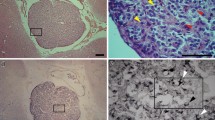Abstract
The decline in the release of various anterior pituitary hormones, particularly prolactin (PRL), as a result of exposure to inhibitory, short-day photoperiods in long-day breeders is a well-documented phenomenon. This alteration in the hypothalamic-hypophyseal-gonadal axis is largely controlled by changes in the duration of the nocturnal melatonin pulse secreted by the pineal gland. Increased duration of melatonin secretion serves to increase the inhibitory activity of the tuberoinfundibular dopaminergic (TIDA) neurons, which in turn suppress PRL release and synthesis. However, other hypothalamic factors also appear to stimulate anterior pituitary function, working in concert with changes in TIDA activity to modulate circulating PRL levels under different photoperiod conditions. Past work from this laboratory has suggested that neurochemical changes at the level of the hypothalamic paraventricular nuclei (PVN), particularly changes in norepinephrine (NE) activity, may represent one of these modulatory influences.
The current study investigated potential alterations in NF, content within the PVN during the early stages of short-day exposure in Siberian hamsters. In addition, the interaction of NE content with the modulatory dopamine (DA) system was investigated via administration of a DA agonist (CB154) or antagonist (pimozide). Hamsters received CB 154 (500 µg), pimozide (45 µg), or control solution via the drinking water under either long days (16L:8D) or short days (10L:14D), and were sacrificed at 1, 3, or 5 wk of photoperiod and drug treatment. The brains were removed, and the PVN microdissected from the hypothalamus and analyzed for catecholamine content using high-pressure liquid chromatography with electrochemical detection (HPLC-EC). The results revealed the expected stimulation of circulating PRL under both photoperiods following pimozide administration, as well as the expected trend toward an accelerated suppression of PRL under short days induced by CB 154. For control animals, there were no changes in NE content, or the ratio of 3-methoxy-4-hydroxyphenyglycol (MHPG)/NE in long-day exposed animalx, but for short-day animals, both NE content and the ratio of MHPG/NE declined over time. Administration of CB 154 had only a marginal effect on NE content and the ratio of MHPG/NE, but pimozide administration resulted in a decline in NE content and an increase in the MHPG/NE ratio under short days, and an increase in NE content and the MHPG/NE ratio over time for long-day animals. These results suggest that both photoperiod and administration of a DA antagonist that increases circulating PRL levels induce alterations in NE terminal activity within the hypothalamic PVN.
Similar content being viewed by others
References
Yellon, S. M. and Goldman, B. D. (1987). J. Reprod. Fert. 80, 167–174.
Badura, L. L. and Nunez, A. A. (1989). Horm. Behav. 23, 27–42.
Tamarkin, L., Baird, C. J., and Alemida, O. F. X. (1985). Science 227, 714–720.
Carter, D. S. and Goldman, B. D. (1983). Endocrinology 113, 1261–1267.
Nelson, R. J., Badura, L. L., and Goldman, B. D. (1990). Ann. Rev. Psychol. 41, 81–108.
Blask, D. E., Leadem, C. A., Orstead, M., and Larsen, B. R. (1986). Neuroendocrinology 42, 15–20.
Badura, L. L. and Goldman, B. D. (1994). Neuroendocrinology 59, 49–56.
Ben-Jonathan, N., Arbogast, L. A., and Hyde, J. F. (1989). Prog. Neurobiol. 33, 399–447.
Shin, S. H., Papas, S., and Obansawin, M. C. (1987). Can. J. Physiol. Pharmacol. 65, 2036–2043.
Watts, A. G., Sheward, W. J., Whale, D., and Fink, G. (1989). CIJ. Endocrinology 122, 593–604.
Badura, L. L. (1993). Endocrine 1, 299–305.
Doffi, C. and Taleisnik, S. (1982). Brain Res. 249, 281–290.
Swanson, L. and Mogenson, G. (1981). Brain Res. Rev. 31, 1–34.
Swanson, L., Sawchenko, P., and Lind, R. (1986). Brain Res. 68, 169–190
Weiner, R. I., Findell, P. R., and Kordon, C. (1988). In: Knobil, E., and Neill, J., eds., Physiology of Reproduction, vol. 1. Raven, New York, pp. 1235–1281.
Gambardella, P., Greco, A. M., Sticchi, R., Bellotti, R., and Di Renzo, G. (1994). Chronbiol. Inter. 11, 213–221.
Greco, A. M., Gambardella, P., Sticchi, R., D’Aponte, D., and deFranciscis, P. (1992). Physiol. Behav. 52, 1167–1172.
Honma, K.-I., Noe, Y., Honma, S., Katsuno, Y., and Hiroshige, T. (1992). Am. J. Physiol. 262, E948-E955.
Mitome, M., Honma, S., Yoshihara, T., and Honma, K.-I. (1994). Am. J. Physiol. 266, E606-E611.
Badura, L. L. and Goldman, B. D. (1992). J. Exp. Zool. 261, 27–33.
Author information
Authors and Affiliations
Corresponding author
Rights and permissions
About this article
Cite this article
Woods, K.A., Buechi, K.A., Illig, A.M. et al. Norepinephrine content in the paraventicular nucleus of the hypothalamus as a function of photoperiod and dopaminergic tone. Endocr 8, 79–83 (1998). https://doi.org/10.1385/ENDO:8:1:79
Received:
Revised:
Accepted:
Issue Date:
DOI: https://doi.org/10.1385/ENDO:8:1:79




